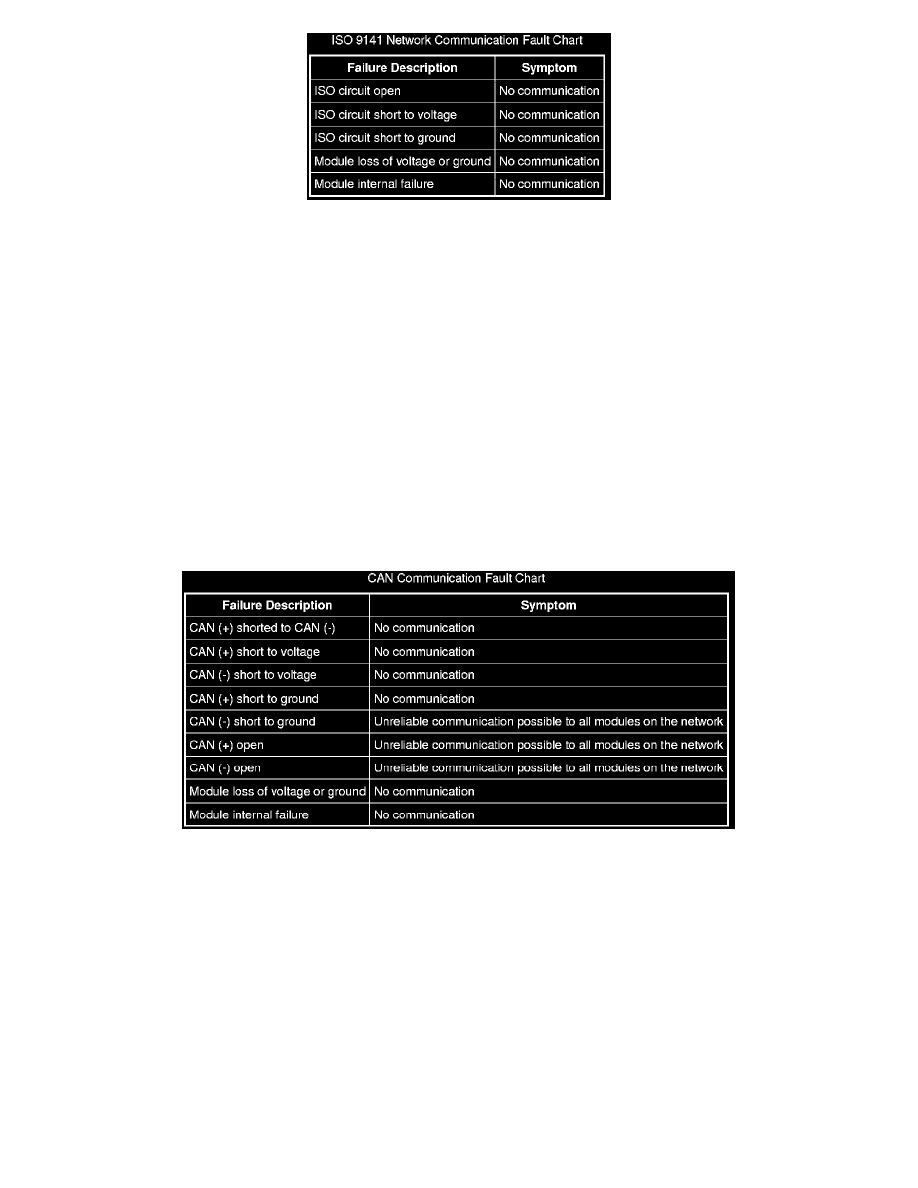Ranger 4WD V6-4.0L (2009)

ISO 9141 Network Communication Fault Chart
High Speed Controller Area Network (HS-CAN) and Medium Speed Controller Area Network (MS-CAN)
The CAN uses an unshielded twisted pair cable of data (+) and data (-) circuits. The data (+) and the data (-) circuits are each regulated to approximately
2.5 volts during neutral or rested network traffic. As bus messages are sent on the data (+) circuit, voltage is increased by approximately 1.0 volt.
Inversely, the data (-) circuit is reduced by approximately 1.0 volt when a bus message is sent. Multiple bus messages can be sent over the network CAN
circuits allowing multiple modules to communicate with each other.
The HS-CAN is a high speed communication network used for the Instrument Cluster (IC), PCM, the 4X4 control module, the Restraints Control
Module (RCM), the Occupant Classification System Module (OCSM) and the Smart Junction Box (SJB). The MS-CAN is a medium speed
communication network used for the Satellite Digital Audio Receiver System (SDARS) module and audio unit (ACM) on satellite radio equipped
vehicles.
In the event that 1 of the 2 network circuits (CAN + or CAN -) becomes open to a module on the network, unreliable network communication to all
modules on the network may result. The module to which the network circuit is open may repeatedly send network messages indicating there has been
partial data received. This type of message is referred to as a Negative-Acknowledge (NACK) message. Repeated NACK messages may "load" the
network with too much activity causing intermittent no communication to other network modules and/or the scan tool.
The following fault chart describes the specific CAN failures and their resulting symptom:
CAN Communication Fault Chart
The following chart describes the specific HS-CAN messages broadcast by each module, and the module(s) that receive the message:
